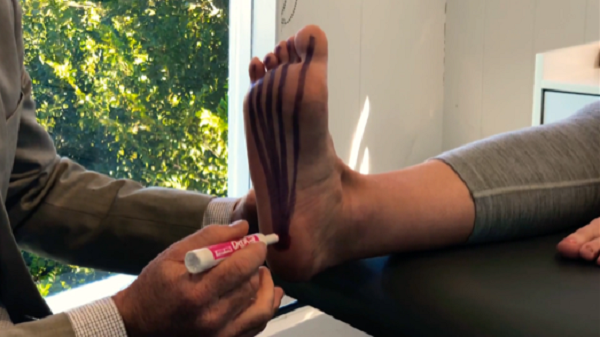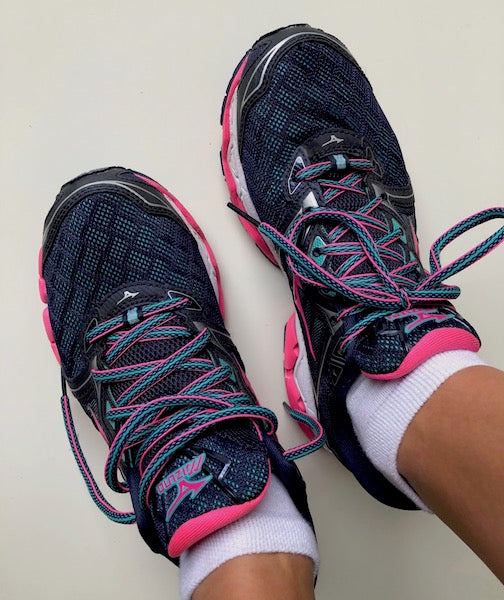"Whenever kids suffer pain, we are quick to blame that they are doing too much sport. If they are training more like professional athletes, we need to be managing them more like professional athletes with these simple management tips"
Kids want to play
As parents, we are constantly trying to get kids to move their bodies and get away from screen time. We know that physical activity is good for all aspects of development and most kids want to get out there amongst it on the sports fields, but the moment that they get a pain, parents and even practitioners are quick to blame too much structured sport for the appearance of these problems.
Are kids really more active than ever?
There is no doubt that some groups of kids are participating more than ever in structured sports, especially school aged adolescents who haven't specialized in their chosen sport yet. It is common for these kids to be training and competing in Soccer, Cross Country and Tennis all at the same time. It is rare for these kids to get a day off. It is difficult to determine whether their overall activity load is actually higher than the good ol' days when kids went hard every afternoon with non-structured activities as there still seems to be a lot left for screen time! Either way, adolescents are said to be training more and more like professional athletes.
1. Train like a pro, maintain like a pro.
If kids are training more like professional athletes, we should be managing these adolescents more like professional athletes. The training principles and structures in place for competitive sports are better than ever as the better coaches understand more and more about training loads and managing athletes. The kids want to be the best they can, parents on the sideline want their kids to perform to the best of their abilities and the coaches are aiming for optimum performances. To achieve this, everyone is committed to pushing the boundaries. These are the same motivations that elite athletes have, the only difference is that adolescents are doing the training but aren't managing their bodies like the elite athletes. Here are some principles to help prevent and manage adolescent sports complaints.
2. Good pain vs bad pain
It is critical to identify if a complaint is a normal discomfort from training or if is the start of something more sinister. Good pains are the normal muscle or tendon soreness that presents in the days after a particularly solid training or game. This micro tears in the tissue stimulate the muscles and tendons to repair stronger and are important for development. These good pains are normally mild and present in the big muscles or tendons.
The bad pains are any pain that occurs more than once, is building in intensity, has a sudden onset or is localised to a smaller structure (such as the shin, foot, ankle, knee, etc). These small structures can develop big pains and stop athletes in their tracks. All problems are more treated quickly, easily and more cheaply if they are dealt with earlier. More information on diagnosing and treating common lower limb pains by clicking here.
3. Building blocks for growing bodies
Sleep is a very simple factor, but often overlooked for adolescents. During sleep Human Growth Hormone is released and is critical for recovery so that athletes can turn around faster and do it all again the next day. Without adequate sleep, the structures of the body don't repair as quickly and won't get the full benefit of the training. The same goes for nutrition with recovery and improvement being impeded if the the building blocks your body requires aren't delivered at the right times and in the right proportions.
It is suggested that teens require 8-10 hours of sleep. Taking on appropriate hydration and nutrition in preparation for training and after training will help performance, recovery and development. Sports Nutritionists like these guys can help - Apple to Zucchini.
4. Maintain to avoid the pain
With back to back trainings, games, fitness, strength and other sessions, it is critical to prepare and maintain adolescents bodies. Coaches are great at implementing active warms-ups, warm-downs and stretching routines. A big consideration for adolescents is their growth spurts where the long bones extend quickly and the muscles lag a few months before they catch up. This results in tight muscle units and higher chance of injury.
Stretching helps, however a large percentage of adolescent complaints that we see are from inflamed growth plates (Sever's disease at the back of the heel at around 12 yrs, Osgood Schlatters below the knee at 14 and Sindling Larsen of the hip at 16). These growth plates become inflamed by the tendons pulling on them, so stretching can aggravate these conditions at times. Foam rollers to speed up the elongation process seems to work better than stretching.
Stretching straight after sport and holding for 3 sets of 90 seconds seems to be the latest advice with stretching and regular sessions on the foam roller are excellent. Focus on the calves for the 10-13 yr olds, quads for the 13-15 year olds and the hip flexors for the 15-18 year olds.
5. Tune their bodies for efficiency
If these young bodies are being pushed to their limits with their training load, then any inefficiencies with the lower limb are the first places to present with cumulative injuries (overuse injuries where the accumulation of load through a part of the body becomes too high and it breaks down). Fine tuning their lower limb function with run technique, specific footwear design or custom orthotics ensures that the work load through the lower limb is balanced so that certain structures aren't working harder than they need to be. This forms the basis of treating many cumulative injuries and it is smart to get these things in place before injury and to improve function and performance.
This is exactly what we do for elite athletes and more info can be found by clicking on the links in the above paragraph.
6. Build the load earlier
There can be challenges with adolescents coming into a sport season under cooked. It is easy to spend 6 months of the year in swim season or have a light summer with a bit of cricket, only to roll into term 2 with Cross Country, Soccer, Netball and Rugby firing up simultaneously. Without the running and impact load through their bodies, the tendon, muscle and ligament strengths are reduced as well as lower bone densities. The sudden increase in load makes all athletes more prone to injury.
Start some impact and run based activities at least 6 weeks earlier. Adolescents performing at higher levels or in multiple run based sports may need to build into the pre-season (a pre-pre-season does sound crazy) or maintain some level of run based activity year round. Maintaining stronger bodies will result in more resilient bodies.
7. Manage the load
Sometimes young athletes have everything in place with their bodies fine tuned and maintained perfectly, yet they still struggle to get through the training workload. The only option is to drop back the training load, however there are smarter ways to do this than simply skipping sessions or dropping sports. As sports podiatrists, we will work with elite athletes and their coaches to manage their load to help them through injury and return to full training.
Adolescents might have a number of coaches and multiple training programs overlaid. Writing down the full training load on a weekly planner and working with your sports practitioner or senior coach to manage these sessions will adjust the loads into appropriate blocks. A kid who is part of a comprehensive cross country training program probably won't get too much benefit from the fitness component of a soccer or rugby session. Sometimes, managing the different elements of each training session can reduce recurrent injuries and at times improve performance. Connecting with a coach experienced with managing young athletes such as these running specific coaches (High Cadence) can help.
We keep in mind that kids want to participate in every training, they want to be a part of the team and they don't want to appear slack, so every effort is made to allow them to participate.
Summary
Kids, parents, coaches and clinicians want kids participating in as much sport as possible.
Adolescents need to manage and maintain their bodies more like professional athletes if they want to train and compete more like professional athletes.
Stretching and in particular foam rollers as well as physical therapies are important for maintenance.
Identify and deal with bad pains early.
8-10 hours of sleep, adequate hydration, a balanced diet and nutrition plans pre and post exercise for recovery and performance.
Fine tuning with shoe set-up, run technique and strength programs is important to reduce cumulative injuries and improve performance.
Build the impact and running load earlier. A pre-pre-season isn't so silly.
Work with a senior coach or sports practitioner to manage the training components across the whole week and the overlaid sports.
If you need help with adolescent sports issues, Shoes Feet Gear - Brisbane Podiatry has experienced sports podiatrists who can help. Call (07) 3367 8667 or book online here


